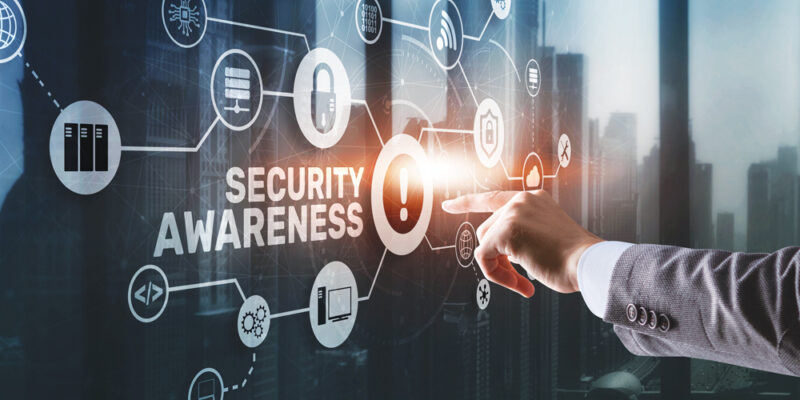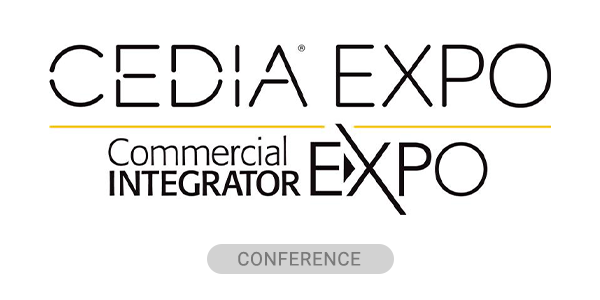Since 2020, networked AV technology systems — such as wireless microphones, IP cameras, conferencing suites, media players, and video encoders and decoders — has become increasingly relied upon. For instance, millions of us are now connecting to online video meetings that depend on this technology — and use it every single day. Sadly, growing interest and dependence on networked AV has also led to a rise in cyber attacks targeting this type of technology.
What’s more, many firms rushed into networked AV setups as a result of adapting to COVID measures, with around 39% admitting they didn’t have time to consider their technology choices properly.
As an integrator, you owe it to your clients to develop and install networked AV systems that are robust against increasingly sophisticated attack vectors.
Let’s dive deep into what you can expect.
Common Cybersecurity Threats in Networked AV Systems
Networked AV faces many increasing cybersecurity challenges and risks. This is not just because of its broad usage, but also because of the sensitive information shared via audio and video technology, such as cameras, microphones and software.
Some of the most prevalent cybersecurity threats facing networked AV include:
- Unauthorized access, where hackers gain control of AV devices and networks through poor access control or security measures.
- Malware infiltration, where compromised devices corrupt internal data and disrupt ongoing operations.
- Denial-of-service attacks, where attackers flood networks and hardware to cause downtime, interrupt operations, and harm company reputation (vectors can include UDP and SYN flood attacks, and Smurf DDoS attacks).
- Data interception, where hackers eavesdrop or place themselves in the middle of conversations to alter, steal or inject data, often exploiting insecure DNS configurations or traffic rerouting vulnerabilities.
- Data leakage, where attackers steal or record sensitive communications to sell, leak, or hold ransom.
- Social engineering, where bad actors trick employees or administrators into giving them access to streams or systems through confidence tricks or phishing.
Best Practices for Securing Networked AV Systems
Securing networked AV can be a delicate process, and installers and integrators need to tailor specific cybersecurity measures to each case. Whether it’s setting up cameras, media players or other communication tools, some recommended networked AV security practices include:
- Applying strong authentication measures and robust access controls (e.g., setting strong access passwords, multi-factor authentication or MFA, and carefully setting user permissions for in-house software).
- Encrypting data shared through networked AV (so that information is impossible to read in the event of a breach).
- Segmenting networks and devices (e.g., by isolating monitors, camera technology and data storage to prevent the number of systems that someone can attack through any one breach).
- Segmenting traffic (keeping AV systems’ communications with other devices limited, therefore limiting attack scope).
- Regularly updating software and firmware for devices such as monitors (to ensure vulnerabilities are patched).
- Running penetration testing (to search for and address hidden weaknesses).
- Ensuring strong physical security (e.g., physically locking networked devices away or housing them in areas that require authorization).
Integrating Cybersecurity into AV System Design
As an integrator, you can take several steps to ensure AV systems are secure against cyber threats at the point of deployment.
For example, it’s important to install all devices and layout communications with clear encryption protocols and requirements for MFA. This, effectively, adds extra protection to data shared and doubly ensures only authorized users can access it.
What’s more, all integrators should think carefully about the future security needs of an AV setup when considering scalability. So, there should be provisions in place for operators to quickly update and upgrade their systems in the event of new threat protection.
As mentioned, segregating networks and traffic is also recommended. By installing AV systems onto network segments separate from critical infrastructure, you can mitigate the chances of malicious attacks affecting other sensitive data.
Integrators should also work closely with IT teams to ensure new AV devices and services operate seamlessly with a company’s existing security measures. For example, can companies bring in additional encoders and decoders in the future, and be assured that they’ll be safe to use?
Above all, however, AV integrators should prioritize choosing hardware and software that’s reputable and replete with security features. For example, any software they install should ideally have built-in data encryption and MFA, and be compatible with a range of third-party IT security tools.
Training and Awareness
Of course, networked AV is only so secure provided that users understand the importance of data security, and ensure they follow best practices from day to day.
Both AV professionals and end users should follow security basics such as using secure passwords for individual accounts, physically securing encoders, decoders and comms devices when not in use, and keeping all information shared private.
Operators should also develop strong incident response plans in the event of a malicious attack. This might include having data backups and restoration solutions on standby, and delegating roles in re-securing a network to specific individuals.
Approximately 95% of all data breaches involve some kind of human element or error, underscoring the critical importance of training and awareness for AV users.
Compliance and Standards
Ultimately, all AV users must follow industry compliance and security frameworks to ensure they meet legal standards when protecting sensitive data. That, too, applies to integrators, who have a duty of care to ensure the systems and software they deploy fall in line with compliance recommendations.
Integrators should familiarize themselves with frameworks such as NIST, for example, which recommends best practices to identify, protect against, detect, respond to and recover from malicious attacks.
Similarly, the extensive ISO/IEC 27001 framework helps integrators and users understand how to manage training, policies, and technology in line with increasingly sophisticated cyber threats.
Conclusion
Although video and audio distribution may seem secure by design, there are still major risks for hackers and bad actors to gain access, steal data, bring down communications and ruin reputations.
Therefore, it falls to integrators and users to ensure that AV systems and software remain robust against emerging threats. That means being proactive about prevention, working together with cybersecurity and IT teams, and ensuring users know the risks and best practices to keep data safe regardless of the systems in play.
Thomas Patterson is senior director of product management: Platform, Mobile and AI at VikingCloud.




